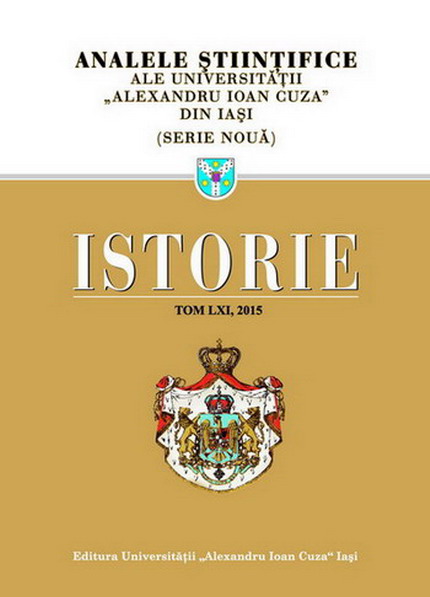Şcoli române la sud de Dunăre, în Macedonia, Epir şi Thesalia (1864-1900)
Romanian schools south of the Danube in Macedonia, Epirus and Thessaly (1864-1900)
Author(s): Ion I. SolcanuSubject(s): History, Cultural history, 19th Century
Published by: Editura Universităţii »Alexandru Ioan Cuza« din Iaşi
Keywords: Macedonia; Bitolia – Monastir; Ianina; Aromanian schools.
Summary/Abstract: Based on published and mostly unpublished documents within various funds of the Central Historical Archives and of the Ministry of Foreign Affairs in Bucharest, the author follows the policy of the United Principalities and then of Romania, in the period 1868–1900. This policy refers to the constitution of Romanian-teaching schools for the Aromanians in Macedonia. By the time Romania gained its independence and became a kingdom, where a couple hundred thousands of Aromanians lived – the governments in Bucharest created and fully subsidized primary schools in the Balkan Peninsula – mostly in Macedonia – at Târnova, Bitolia-Monastir, Avela-Abela, Grebena, Ochrida, Veria-Călive, Vlaho-Clisura, Perivoli, Cruşova, Smexe-Smesce and Zarca. In all of these schools, the teaching process was conducted in Romanian.Once Romania gained its independence and became a kingdom, Romanians within the Balkan Peninsula revived their desire to confirm that they belong to the Romanian nation. This desire determined them to request schools and religious services in Romanian. Therefore, besides the aforementioned primary schools, other ones were founded at Tricala, Perlepe, Magarova, Mulovişte, Samarina, Pisoderi, Veria – Selia, Veria – Xirolivda, Băeasa, Liumniţa, Oşani, Turia – Crania etc. Thus, in the Balkan Peninsula, there were 53 Romanian primary schools for boys, 17 Romanian primary schools for girls and a mixed school at the end of the 19th century. The presence of the 71 Romanian primary schools – where a couple thousands of Aromanian pupils studied every year – determined the constitution of the Romanian middle schools at Bitolia – Monastir (1881) and Ianina (1887), followed by the creation of a Romanian High school for boys and of a Regular School for girls (both at Bitolia – Monastir), as well as of the Commercial School of Thessaloniki (1895).The subsidies for the Romanian schools within the Balkan Peninsula included the wages of teaching and auxiliary personnel, the rent for school locations, the didactic materials, the electricity and heat bills, the maintenance, and free manuals for pupils (edited in Romania). Two primary schools – of Gopeşi and Costeana – were funded and subsidized by the Aromanians D. Cazacovici and Dima Sterghiadi. The teaching staff at the Romanian schools in Macedonia, Thessaly and Epirus (until the High school and the Regular school for girls in Bitolia – Monastir were founded) came from among the Aromanians who had received free education in the Romanian high schools, regular schools and universities of Bucharest and Iaşi (D. Athanasescu, I. Tomescu – Şiomu, G. Tomara, Toma and Filip Apostolescu, D. Abeleanu, N. Nacea, G. Dante, Dim. Gh. Badralexe, Guşu Papacosta, Apostol Tacit, Elena Tucea, D. Cosmescu, Sterie Cionescu, etc). Among the dozens of Macedonian–Romanian patriotic teachers, it is worth highlighting Apostol Mărgărit – a primary teacher, headmaster and inspector of the Romanian schools in Macedonia.
Journal: Analele Ştiinţifice ale Universităţii »Alexandru Ioan Cuza« din Iaşi. Istorie
- Issue Year: 2015
- Issue No: 61
- Page Range: 297-311
- Page Count: 15
- Language: Romanian
- Content File-PDF

